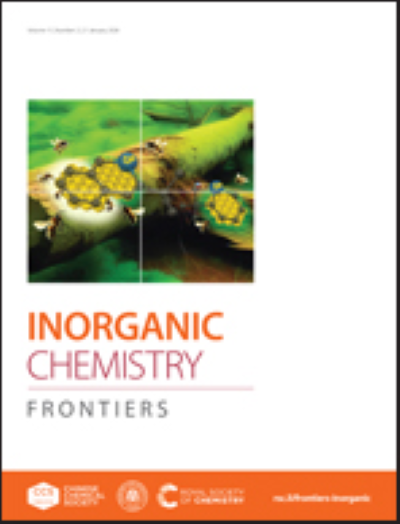Constructing Anatase/Rutile TiO2 Homojunction-Supported Pd Electrocatalyst via Band Alignment and Oxygen Vacancy Engineering for Direct Methanol Fuel Cells
IF 6.1
1区 化学
Q1 CHEMISTRY, INORGANIC & NUCLEAR
引用次数: 0
Abstract
Maximizing reaction kinetics of Pd catalysts for oxygen reduction reaction (ORR) while minimizing CO poisoning during methanol oxidation reaction (MOR) remains a key challenge for advancing direct methanol fuel cells (DMFCs). Herein, we synthesize an anatase/rutile TiO2 homojunction (A/R-TiO₂) through energy band alignment and oxygen vacancies engineering, providing support for Pd nanoparticles to decipher the strong correlation between this unique structure and the electrocatalytic properties of Pd/A/R-TiO₂ catalysts. Combined experimental results and theoretical calculations demonstrate that the near perfect energy band alignment and abundant oxygen vacancies in A/R-TiO₂ not only accelerate electron transfer to Pd surface, thereby maximizing reaction kinetics and catalytic efficiency, while optimize the electronic structure of Pd active sites to reduce adsorption energy of key intermediates (*OH, *CH2OH, *CO) during ORR and MOR. Consequently, the Pd/A/R-TiO₂ catalyst delivers remarkably positive E1/2 of 0.929 V and enhanced mass activity of 4.27 A mgPd-1 at 0.85 V for ORR, respectively nearly 13 and 27 times greater than those of Pt/C and Pd/C catalysts commercially available at present. The Pd/A/R-TiO₂ catalyst displays high selectivity for an effective four-electron transfer pathway, a lower H2O2 yield (1.66%), and excellent methanol crossover tolerance. Importantly, the catalyst demonstrates exceptional stability, exhibiting minimal activity decay and negligible structural degradation after 10000 cycles. Furthermore, the as-synthesized catalyst achieves superior MOR activity (4.10 A mg-1 and 8.85 A cm-2) and enhanced CO tolerance, surpassing commercial Pt/C and Pd/C catalysts. These bifunctional catalysts thus hold strong potential for large-scale and industry-orientated use of DMFCs.求助全文
约1分钟内获得全文
求助全文
来源期刊

Inorganic Chemistry Frontiers
CHEMISTRY, INORGANIC & NUCLEAR-
CiteScore
10.40
自引率
7.10%
发文量
587
审稿时长
1.2 months
期刊介绍:
The international, high quality journal for interdisciplinary research between inorganic chemistry and related subjects
 求助内容:
求助内容: 应助结果提醒方式:
应助结果提醒方式:


